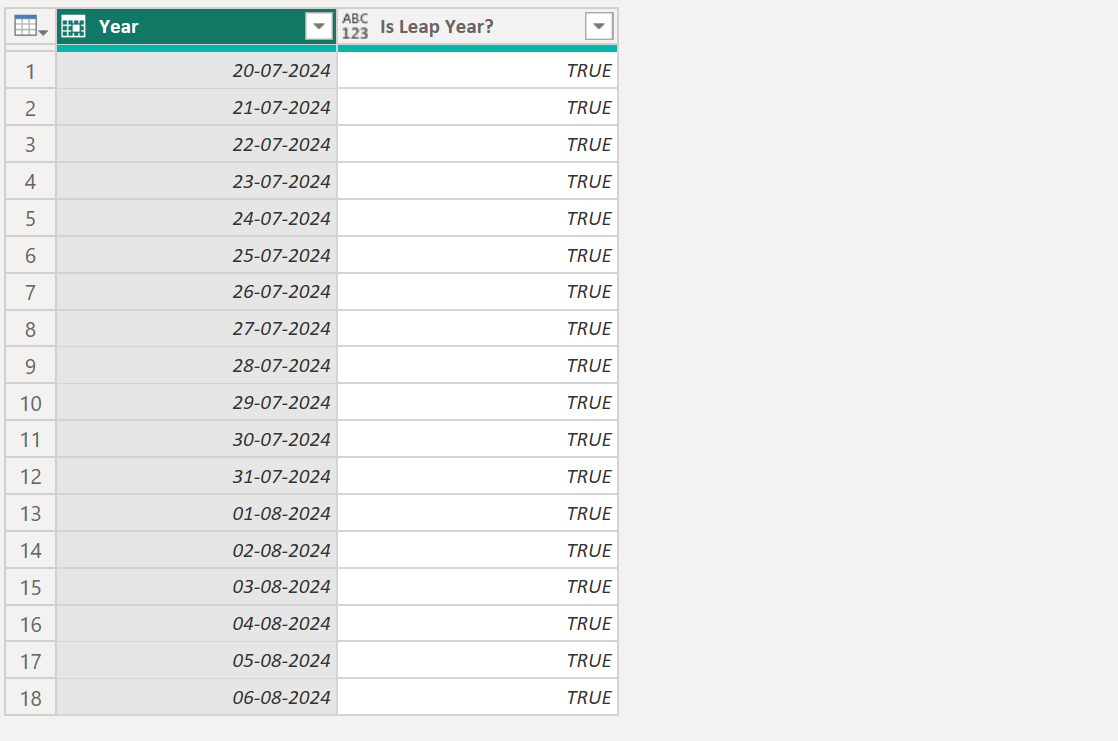Date.IsLeapYear Function in Power Query
The Date.IsLeapYear function returns a logical value indicating whether the year portion of a DateTime value is a leap year.
Syntax
Date.IsLeapYear(dateTime as any) as nullable logical
Example: As all the dates of year 2024, and year 2024 is a leap year, that’s why it returns true for each date.
Power Query M
let
Source = Table.FromRecords(
{
[Year = "20-07-2024"],
[Year = "21-07-2024"],
[Year = "22-07-2024"],
[Year = "23-07-2024"],
[Year = "24-07-2024"],
[Year = "25-07-2024"],
[Year = "26-07-2024"],
[Year = "27-07-2024"],
[Year = "28-07-2024"],
[Year = "29-07-2024"],
[Year = "30-07-2024"],
[Year = "31-07-2024"],
[Year = "01-08-2024"],
[Year = "02-08-2024"],
[Year = "03-08-2024"],
[Year = "04-08-2024"],
[Year = "05-08-2024"],
[Year = "06-08-2024"]
}
),
#"Changed Type" = Table.TransformColumnTypes(Source, {{"Year", type date}}),
Return = Table.AddColumn(#"Changed Type", "Is Leap Year?", each Date.IsLeapYear([Year]))
in
Return The output will be shown in the following image:
